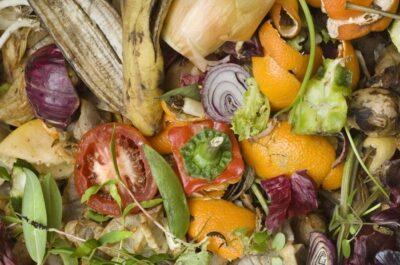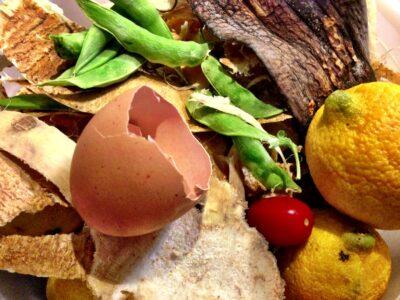|
Listen To The Article
|
Most Americans are familiar with the old adage “waste not, want not,” but as a nation we certainly do not follow it. Americans are guilty of throwing away 40 percent of the food – a whopping $165 billion worth — produced every day in this country. While some of that waste comes from farms, stores, restaurants and institutions, the majority of the waste happens right in our own homes.
We buy more than we can eat. Sometimes we just forget about food sitting in the back of our refrigerators and freezers. We store food improperly, and we toss out food or food scraps that are still edible. You can help the environment and your wallet at the same time by learning some new ways to reuse food scraps. Here are some of our favorite ideas.
1. Bread. You can forget buying croutons or bread crumbs ever again when you get into the habit of reusing your bread ends, bread crusts and leftover pieces. It’s surprisingly easy. You can use and combine any type of bread; the only requirement is that it is dry. If the bread is too moist, just bake it in a single layer in a 350-degree (Fahrenheit) oven for about 10 minutes or until dry. Let cool and then dice the bread into one-inch cubes. Store the cubes in an airtight container in the refrigerator.
When you need bread crumbs, simply grind the desired amount of cubes in your food processor. For croutons, spread the cubes in a single layer on a baking sheet. Sprinkle with desired seasonings and drizzle with olive oil. Gently toss to combine and then arrange the cubes back in an even layer. Bake for about 15 minutes in a 350-degree oven. Use croutons that day for best taste.
2. Meat. Save leftover beef, pork, chicken, turkey, fish or seafood to make tasty homemade stock. Bones add nutrition and flavor. The stock (or broth) can then be used in making soups, stews, sauces and gravies. You also can use stock to sauté or roast vegetables. All you need are: your leftovers; a large soup pot; vegetables such as onions, carrots and celery; water; and a strainer.
Bring the broth to a vigorous boil. Then reduce to a simmer until done (beef broth: 48 hours; chicken or poultry broth: 24 hours; fish broth: eight hours). During the first few hours of simmering, you should spoon out the frothy layer that forms at the surface. (If your meat is from grass-fed, healthy animals, you will see less of this foam than with other animals.) Let the broth cool slightly before straining out all the bones, meat and vegetables. Store the broth in the fridge for up to five days or freeze for later use.
3. Vegetables. Make good use of all those veggie scraps you toss away. Celery tops, onion skins, carrot peels, garlic skins celery ends and other scraps are great for making a tasty and nutritious vegetable broth. Save your scraps in the freezer until you have enough to cook. Other ideas to flavor your broth are corn cobs (they release a milky liquid that adds rich taste) and tomato ends for added liquid and taste.
Don’t throw out that pickle juice when the jar is empty! Add leftover raw carrots, broccoli and cauliflower florets, celery sticks and bell pepper strips directly to the jar of any type of leftover pickle juice. Keep the jar closed and refrigerated. The marinated veggies taste great for snacking or on a crudité platter.
Discover The World’s Healthiest Storable Survival Food!
4. Fruits. Here are a few ideas for reusing your fruit scraps:
- Throw citrus peels into the garbage disposer to neutralize unpleasant odors.
- Apple peels can be a natural kitchen cleaning product. The acid in the peels can remove stains from aluminum pots and pans. Fill the dirty pan with water, add apple peels and then simmer on the stove for 20 to 30 minutes.
- Add cucumber peels to your bathwater to help soothe dry, itchy skin.
- Use that unneeded lemon half to clean and shine your stovetop.
- You can shine your shoes by rubbing the inside of a banana peel over your shoes and then buffing the residue away with a soft, clean cloth.
- Add flavor and vitamins by adding slices of fruit to your fresh water. Refrigerate in a glass jar or pitcher.
5. Compost. When all else fails, compost your food scraps in your backyard composter or compost pile, or consider a worm composter. This self-contained system allows worms to eat your kitchen scraps and in return, the worms will provide you with nutrient-rich soil for your garden. Indoor and outdoor worm composters in a variety of sizes are available for purchase, or you can make your own.
What are unique ways you avoid wasting food? Share your thoughts in the section below:
 Off The Grid News Better Ideas For Off The Grid Living
Off The Grid News Better Ideas For Off The Grid Living





